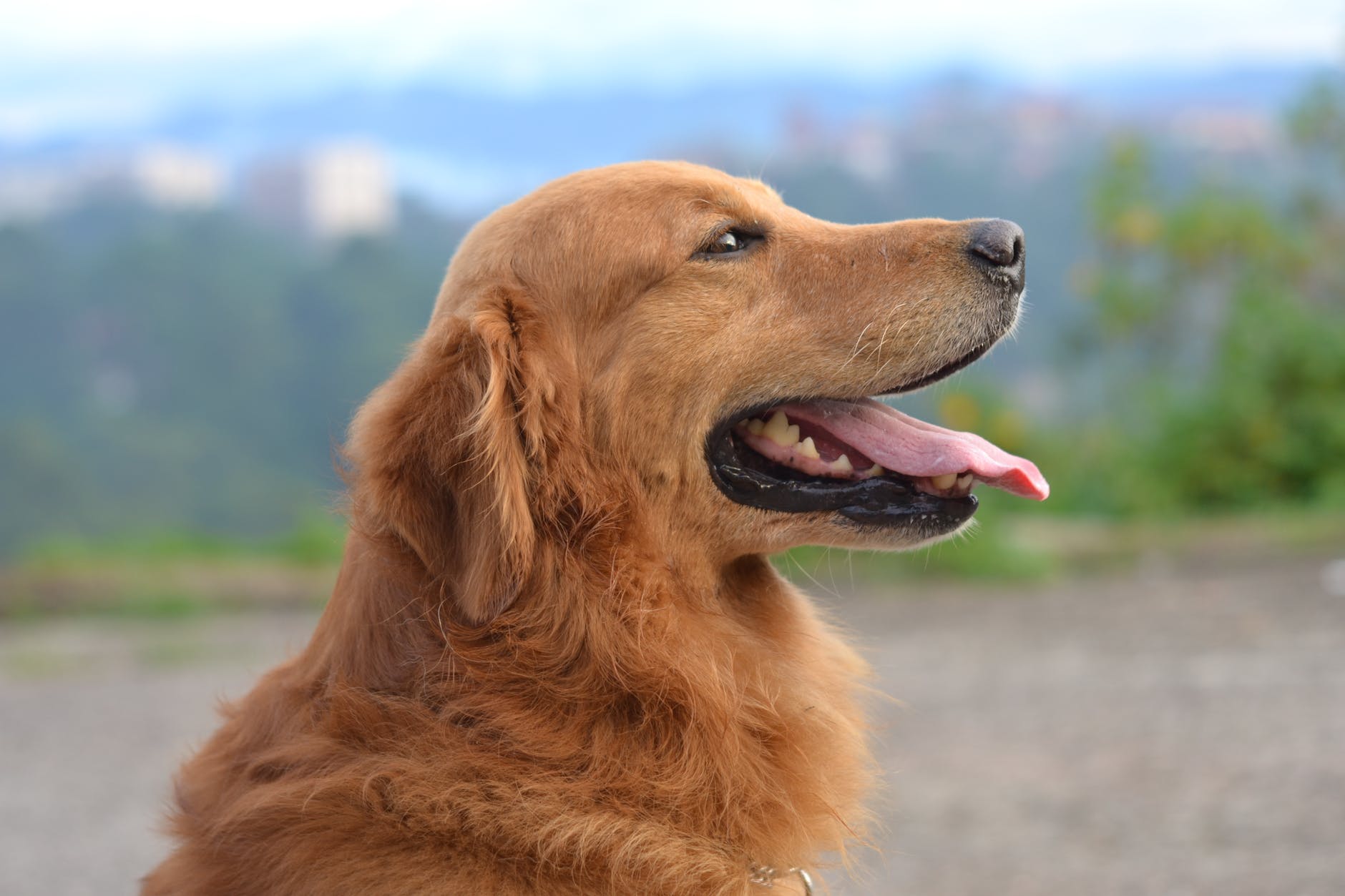The Golden Retriever projects a friendly nature.
The Golden Retriever is still one of the most popular dog breeds, especially among families. He is not only distinguished by his docility, he also shows numerous other qualities.
Read everything you need to know about the Golden Retriever in the article below.
Table of Contents
Appearance: Muscular dogs with a harmonious build
The great popularity of the Golden Retriever is certainly not only due to its amiable nature, but also to its attractive appearance. Golden Retrievers have a very harmonious and well-proportioned physique.
His skull with a clear forehead and his dark eyes give him the typically gentle and friendly expression. The strong muscles and strong bones make him a very agile dog who likes to move around.
The golden retriever’s medium-length coat is straight or wavy, but never curly. The fur lies close to the back. The back of the forelegs, the underside of the tail, and the chest and stomach area, on the other hand, are heavily feathered. Due to the dense undercoat, the retriever does not mind extreme, wet and cold weather conditions.
The color ranges from a strong gold to a soft moon yellow to cream. Occasionally, white hairs may appear on the chest.
The Golden Retriever is one of the medium-sized dogs . According to the breed standard, the shoulder height in males is between 56 and 61 centimeters. Bitches are slightly smaller, measuring 51 to 56 centimeters in height. The weight of the dogs is – depending on gender and size – between 30 and 40 kilograms.
Field Trial vs. Show Line
Differences between work and show line
As with other breeds, the Golden Retriever has two different breed lines with their own goals in terms of internal and external traits.
The work line (or field trial) is characterized by an athletic and slim physique. The representatives of this line are particularly spirited and have a pronounced hunting instinct. The willingness to learn is also particularly high. This makes this line most similar to the original breeding goal of a Golden Retriever.
The show line, on the other hand, is mainly about the external appearance. The physique is more compact, the coat color is clearly lighter. The fur is usually significantly longer and thicker compared to dogs from the working line.
The essence is also different. As the name “Show” suggests, Golden Retrievers from this line are calmer and more relaxed. But that does not mean that they do not enjoy exercise and a lot of sport. For families, they tend to be more suitable than dogs from the work line.
Character: loyal and willing to learn bundle of energy
Like hardly any other pedigree dog, the Golden Retriever is famous for its “will to obedience”. He wants to please his people and is characterized by a pronounced joy in learning. He adapts to everyday situations with a lot of serenity and loves to participate in all activities of his owners.
Retriever keepers jokingly say that a Goldie would rather help a burglar carry valuables out of the house than evict them. In fact, his protective instinct is only rudimentary, if at all. So he is certainly unsuitable as a guard dog.
Instead, his enthusiasm for work and his intelligence enable him to be an excellent guide and therapy dog as well as a handicapped companion dog. In combination with his good nose and innate hunting instinct, these characteristics also lead him to use as a rescue dog or drug and explosives detection dog.
Another great passion of the Golden Retriever is eating. Compared to other breeds, retrievers have a huge appetite for pretty much anything that comes at their fingertips. Unfortunately, this makes golden retrievers prone to obesity. So, at best, pay attention to the right diet from the age of a puppy and, above all, strictly adhere to the quantities specified in the food.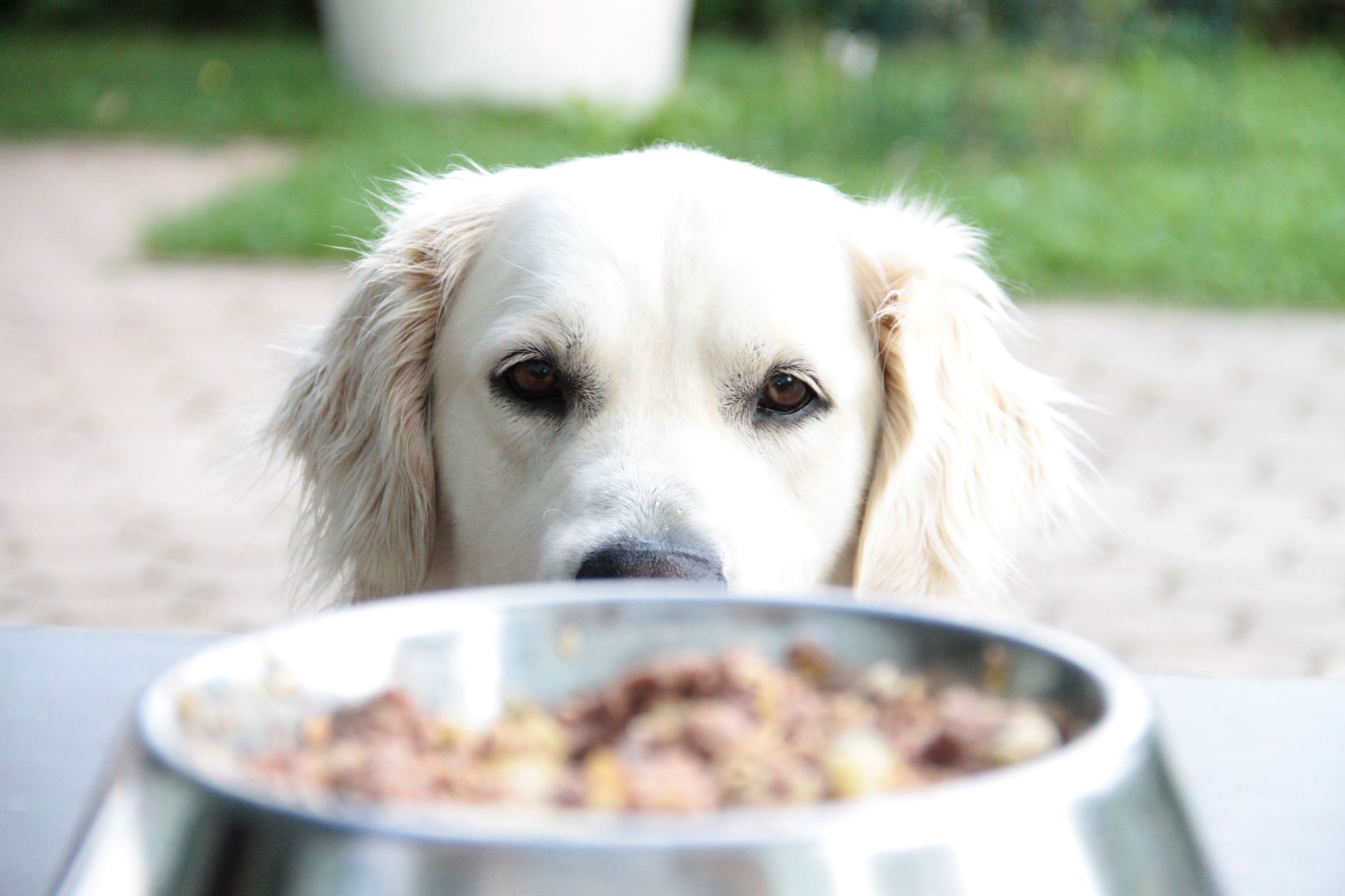
Grooming: A hairy affair all year round
Pay special attention to your Golden Retriever’s wonderful coat. It not only loses hair during the change of coat, but more or less sheds all the time. That’s why it has toYour dog’s fur should be brushed once or twice a week . Not only will this de-felt the undercoat, but it will also reduce the amount of hair you find on carpets, pillows and the couch.
In addition to the coat, your Golden Retriever’s eyes, ears, paws and teeth also require regular checks. It is best to get your four-legged friend used to such checks when they are puppies. On the one hand, they recognize possible changes in your favorite more quickly, and on the other hand, they allow the procedure to go through more calmly.
Living together: is a Golden Retriever right for me?
The human-centered retriever is one of the most popular family dogs worldwide. His good-natured and serene nature, as well as his trusting and playful nature make him particularly popular with families with children. The friendly Goldie also proves to be extremely compatible with other pets.
The Golden Retriever is rather unsuitable for keeping in a small apartment simply because of its height and the ability to move around. In the best case, your darling will have a house with a garden. Keeping in a kennel or staying alone for a long time are also out of the question for the sensitive Golden Retriever. Let him participate in your life and, above all, plan enough time for his physical and mental occupation.
Movement: A race with demands
Like all hunting dogs, Golden Retrievers are very agile and therefore require a lot of training. Monotonous daily walks are definitely not enough here. After all, the intelligent retrievers want to be supported not only physically but also mentally.
In addition to small retrieval exercises and search games, different ones are suitable Sports and training types for the golden retriever. For example, they are particularly popular Obedience ,Agility , dummy training, tracking work respectively Mantrailing or working in a rescue dog squadron.
You give your water-loving dog real joy when you treat him to a bath in a stream, lake or sea. Golden retriever namely like to swim for their life. If none of this is in the vicinity, he is content with puddles or the water from the garden hose.
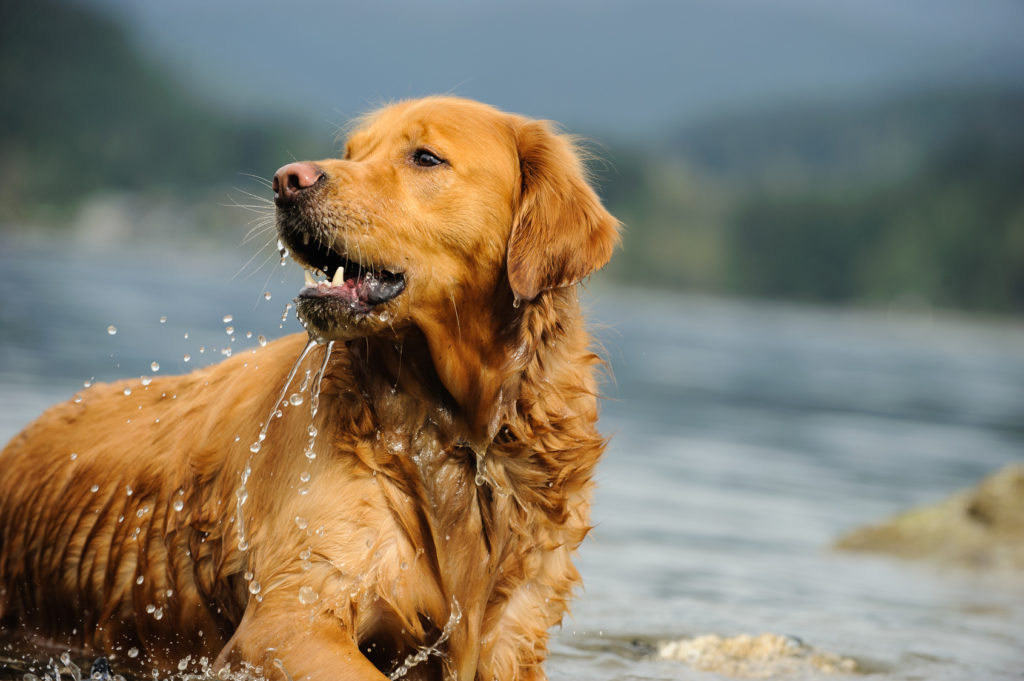
Hereditary diseases of the golden retriever
The golden retriever experienced a real boom in the 1980s and 1990s. To this day he is one of the most popular breeds in the Anglo-Saxon and German-speaking countries.
Unfortunately, this boom also had many negative side effects. Greedy “multipliers” wanted to earn quick money with the cute puppies. For this purpose, the dogs were mated unplanned and regardless of the nature and health of the animals. As a result, some breed-typical diseases arose from which some retrievers still suffer today.
We try to reduce the risk of such diseases again through targeted breeding selection and strict approval requirements. However, the following hereditary diseases are still more common than average in Golden Retrievers:
- Hip Dysplasia (HD)
- Elbow dysplasia (ED)
- epilepsy
- Progressive Retina Atrophy (PRA)
- Hereditary cataract (HC)
Nevertheless: Healthy Golden Retrievers have a relatively high life expectancy at twelve to 16 years of age. If you have chosen a Goldie from a good breed, you can look forward to many years of joy with your darling.
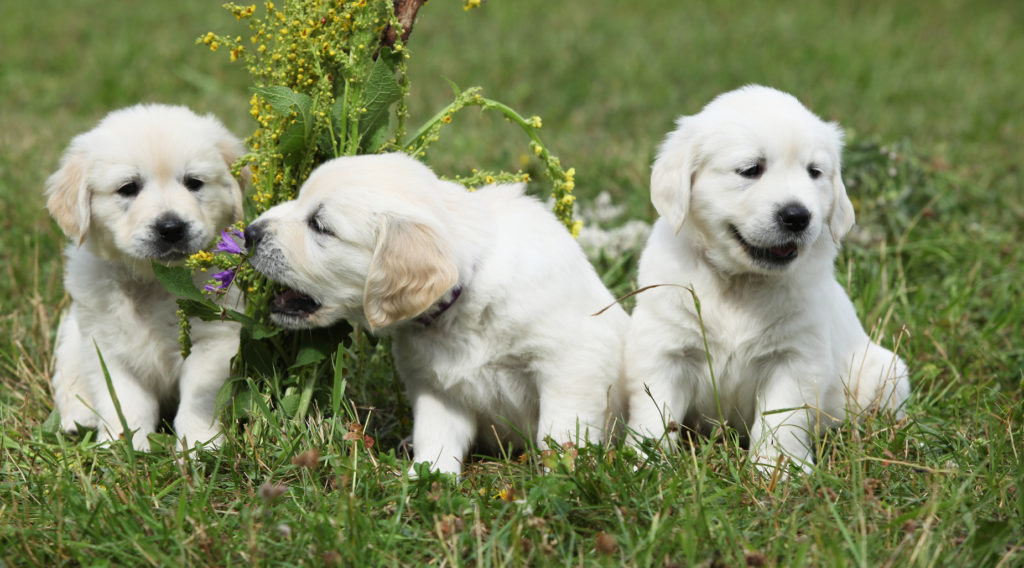
If you are interested in a golden retriever puppy, be sure to check that the breeder has performed all of the required health checks.
Have the pedigree shown to you and convince yourself on site that the parents and siblings are in perfect health.
Only buy your puppy from a recognized breeder and take the time to make a careful selection.
The price for a healthy puppy with a reputable breeder is now around 2000 euros and up.
A dog that will accompany you and your family for many years is definitely worth the money.
In addition, your little ball of fur is usually already chipped, dewormed several times and, depending on its age, vaccinated at least once.
It is also always worthwhile, also in the surrounding areas
Check with animal shelters .
Sometimes not only older Golden Retrievers but also puppies are waiting for a nice new home here.
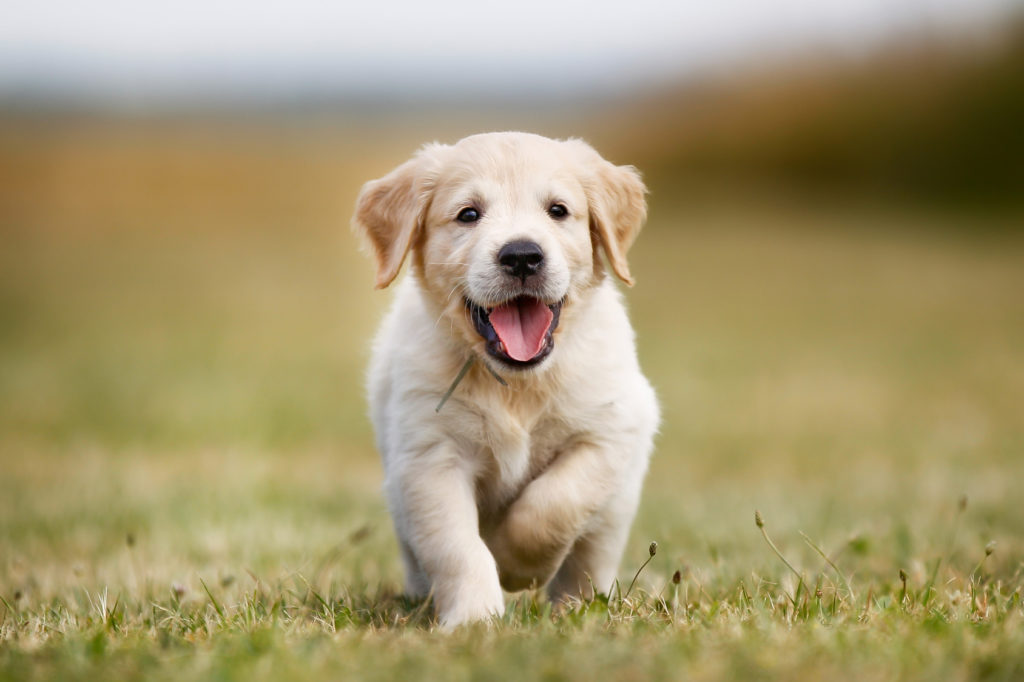
Origin and breeding of the Golden Retriever
Many sagas and legends surround the origins of the various retrievers to this day. Unlike most retriever species, however, the history of the golden retriever can be clearly traced back to at least 1864.
In that year the Briton Sir Dudley Marjoribanks (later he was appointed Lord of Tweedmouth) bought the yellow Wavy-Coated-Retriever “Nous” from a shoemaker in Brighton. The male was the only yellow puppy among the otherwise black siblings. Marjoribanks started breeding dogs on his estate “Guisachan” in the north of Scotland.
The goal of his breeding efforts was a perfect retriever for hunting wild birds. In 1868 he therefore mated Nous with the tweed water spaniel bitch “Belle”. At that time, spaniels were not only considered to be very enthusiastic about water, they were also known as persistent retrieving dogs.
The descendants of Nous and Belle crossed Tweedmouth with other Wavy-Coated Retrievers, Tweed Water Spaniels and red Irish setters over the next 20 years. In line even with a sand-colored bloodhound. The Golden Retriever as we know it today evolved from these crossings. In 1913 the breed was officially recognized by the British Kennel Club.
According to the original breeding goal, the Golden Retriever was initially used for “work after the shot”. His main task was therefore to retrieve game that had been killed. With a soft mouth he brought the dead animals to the hunter.
Conclusion: a loyal companion for active owners
With a Golden Retriever you bring a very people-oriented and willing to learn comrade into your home. He wants to be there everywhere and is up for everyone to have fun. All day alone on the couch or lying around in a baskets is not for him.
With the careful selection of a suitable puppy, you and your Golden Retriever can look forward to many active years together.

